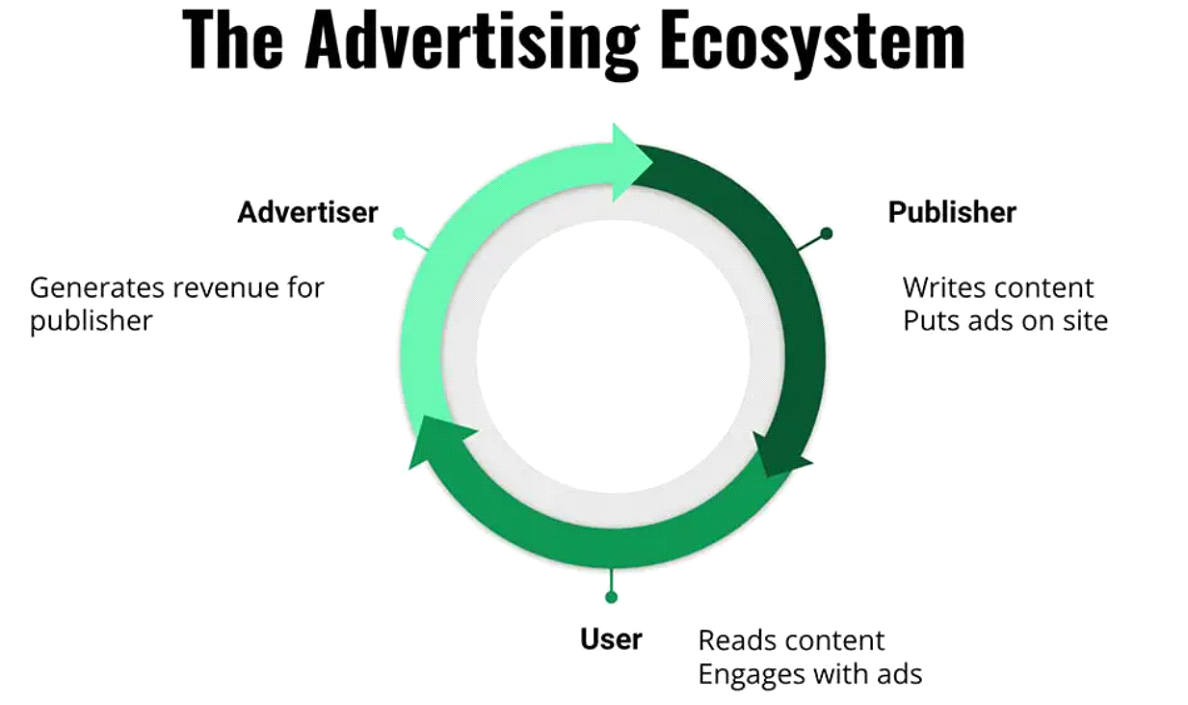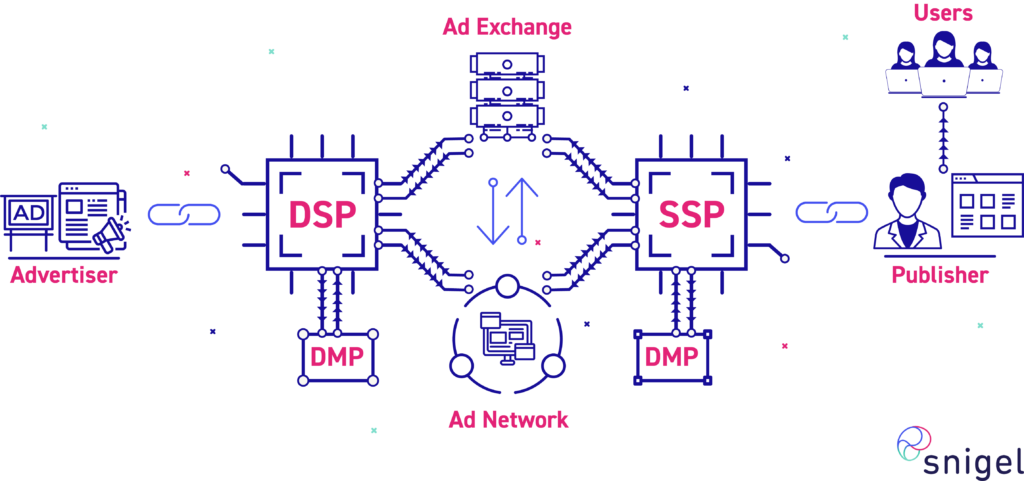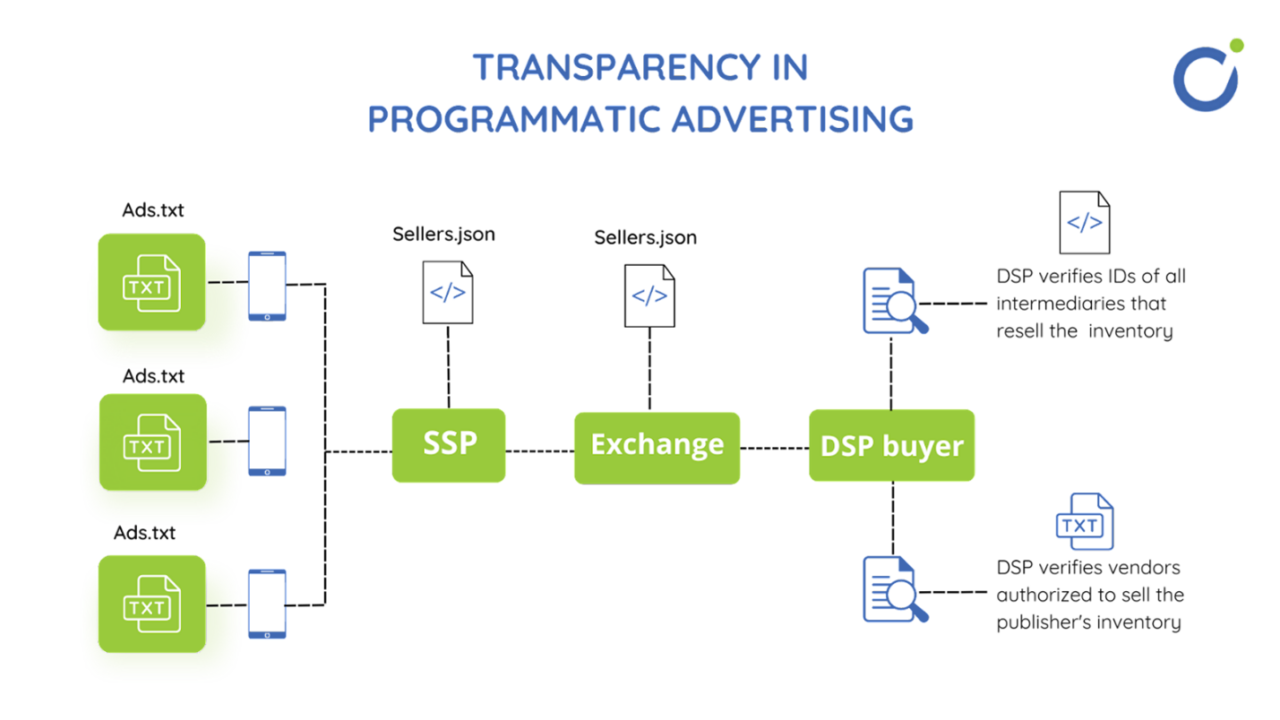Digital advertising is getting more and more complicated these days, and it’s probably only going to get more. It feels like there are always new layers and people involved, making it hard to keep up.
But even with all the complexity, there are three key players that stay constant in the digital advertising world: the publisher, the advertiser, and the user. These three elements are what really make the whole system work.

A short history of the advertising ecosystem
The advertisers and publishers used to have a simple relationship, where the advertisers would advertise on the publisher’s website and the publisher would charge them an agreed-upon amount. However, as time went on, brands and advertisers desired more specific targeting options, such as focusing on particular age groups or user locations. This led to a more complex situation. To address the complexities of this targeted advertising, various technologies were created. This is where DSPs (Demand-Side Platforms) and SSPs (Supply-Side Platforms) come into play:
DSPs, also known as Demand Side Platforms, cater to the needs of brands and agencies by offering comprehensive campaign management solutions. These platforms facilitate tasks such as budget allocation, precise targeting, and efficient bidding. DSPs excel in managing advertising activities across various real-time bidding (RTB) networks. Notable examples of DSPs include Amazon Ads, Quantcast, and Amobee.
Supply Side Platforms (SSPs) enable publishers to efficiently supply their inventory to advertisers and brands, resulting in wider exposure and increased revenue for their ad space. Prominent SSPs such as AppNexus, Pubmatic, and Amazon Publisher Services are widely used in the industry.
Below is a diagram illustrating the integration of DSPs and SSPs within the advertising ecosystem. On the left side, we observe brands collaborating with agencies, which subsequently utilize DSPs within an ad exchange. Numerous DSPs are involved in the ad exchange process.

Image credit: Snigel
On the right-hand side, we have the publisher, who is creating content. They are working with an ad server, which then uses the different SSPs. SSPs are currently integrated into data management platforms to aid in the identification of crucial targets that advertisers aim to bid on.
Advertisers and publishers utilize their respective platforms to access advertising exchange. Advertisers make use of DSPs, while publishers rely on SSPs. The process commences when a user visits a website with an ad slot. Ad networks insert a code snippet on the publisher’s website for the ad slot, enabling advertisers to place their ads using the ad network’s DSP. The information is then transmitted through an ad exchange, where publishers offer their stock directly to advertisers via an external DSP. The ad exchange translates this data into an auction, sending bid requests to DSPs, which respond by placing bids on behalf of the advertiser. The ad exchange collects all the bids and forwards the winning bid to the original tag from the publisher’s ad server.
Fortunately, publishers are not required to participate in the bidding process as it is fully automated and operates in the background. However, possessing a basic comprehension of the advertising ecosystem can aid in comprehending the source of your revenue.
How the bidding process works
When ad tech was first introduced, the Waterfall Auction was created to allow multiple players to compete for specific advertising spaces instead of just giving it to one advertiser. The process began by setting a floor for the CPM. If Advertiser 1 bid below the floor price, such as $2.75 when the floor was $3.00, their ad would not be selected. However, if Advertiser 2 bids above the floor price, such as $3.25, they would win the ad space.

The aforementioned approach resulted in lost revenue opportunities. As the advertisement inventory was allocated to the highest bidder above the minimum price, other bids were disregarded. This implies that Advertiser 3, who was willing to bid $3.30, could have been overlooked if Advertiser 2 had bid $3.25 and secured the space before them. Consequently, the publisher missed out on potential advertisers who were willing to pay a higher price.
Header bidding became relevant at this point. In this particular header auction scenario, all four advertisers had the opportunity to engage in the bidding process simultaneously. Advertiser 3 emerged as the top bidder, thus securing the placement for their advertisement.
Due to the multitude of parties involved in the process of filling ad inventory, maintaining the initial level of transparency within the ad ecosystem has become challenging. In order to address this issue, Ads.txt (Authorized Digital Sellers) was introduced as a secure method for publishers to declare the authorized sellers of their inventory. Google MCM (Multiple Customer Management), in which PubFuture is a participant, now mandates the implementation of Ads.txt. This protocol effectively eliminates malicious entities that attempt to exploit the bidding system for their personal gain.

While ads.txt primarily caters to publishers, sellers.JSON is specifically designed for SSPs and exchanges. Sellers.json, which is publicly accessible, offers vital details regarding the intermediaries or resellers participating in the advertisement transaction process. By utilizing both files, the ultimate seller can be identified, enabling publishers to authenticate the validity of their relationship with an SSP.
How to benefit from understanding the advertising ecosystem
Understanding the impact of your actions within the ecosystem is crucial for optimizing your site’s performance. With a clear understanding of the advertising ecosystem, you can effectively navigate it to maximize your benefits.
Modifying the variables can have an impact on the bidding process for advertisers and alter the way they bid. This encompasses ad locations, sizes, colors, and more. For instance, if a 300×600 ad size is permitted for all users instead of a 300×250 sidebar ad, it can influence the future viewability and CTR (click-through rate) of the ad units beneath it. Therefore, it is crucial to select the most favorable circumstances to enable the larger ad size.
The number and size of ads play a crucial role in the testing process due to a phenomenon known as ad dilution. Ad dilution occurs when ads compete for the user’s attention, resulting in a decrease in their effectiveness. If there are too many ads or if they are excessively large, they will divert the user’s attention away from other ads on the page. Advertisers assess the bidding history and overall performance of a website’s ads. If users are bouncing or not scrolling to view other ads because they were overwhelmed by larger or excessive ads, advertisers will reduce their bids for that ad inventory. This continuous decline in performance devalues your ad inventory over time, leading to a decrease in revenue and a negative impact on user experience.
A common occurrence among PubFuture customers who switch to another provider is that the new provider may overload their website with ads, without taking into account how these ads may interfere with each other. The publisher may initially experience a boost in revenue due to the positive ad performance history, as advertisers bid on all the new ads on the website based on its past performance.
Over time, as the frequency of clicks on those ads decreases and users bounce more frequently, the performance of the ads will decline, resulting in a continuous decrease in the value of your ad inventory. Consequently, the only solution to increase earnings is to place additional ads on the page. Although this may temporarily boost revenue, it will further diminish the value of the ad inventory, ultimately leading to a continuous devaluation of your site.
PubFuture’s ad testing is a crucial tool for publishers seeking to optimize their ad inventory. As we’ve previously discussed, publishers have full control over their ad inventory and can profit greatly by tailoring ads to individual users. PubFuture constantly adjusts variables such as ad location and size to find the optimal combination for each visitor. As Ad Tester continues to test and learn, it becomes increasingly adept at predicting what a particular user will respond positively to. This not only improves user experience but also boosts earnings over time.
Putting it all into practice
Over the years, the advertising ecosystem has undergone significant transformations since its inception in the 1990s. Presently, publishers have to navigate through a plethora of considerations and challenges that were not present during the early days of advertising. Nonetheless, publishers today have access to more lucrative advertising opportunities than ever before, enabling them to generate substantial revenue from their websites.
Improving your earnings and enhancing user experience (UX) are crucial aspects to consider. Among various strategies, prioritizing the enhancement of your ad inventory holds the utmost significance. This entails ensuring the involvement of appropriate actors, such as utilizing an ads.txt file, and collaborating with a partner who accurately implements a seller.json file. Additionally, optimizing all potential ad locations on your website is essential to maximize session revenue. By focusing on these factors, you can effectively boost your earnings and enhance the overall user experience.






